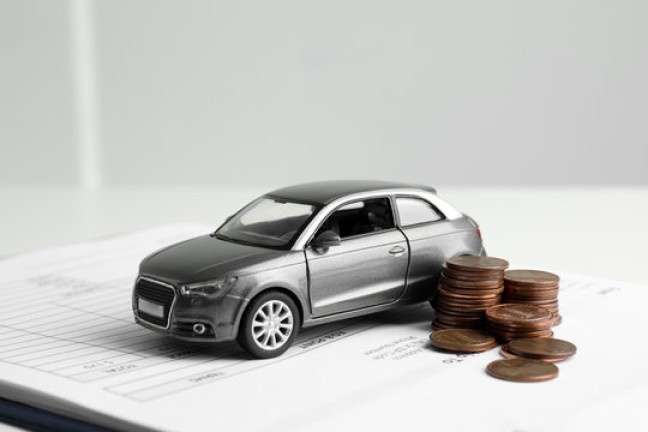If you’re considering buying an aqua car or investing in one, you’re likely already familiar with the term. But if you’re new to the concept of aqua car finance, it can be a little overwhelming. In this article, I’ll break down everything you need to know, explaining how aqua car finance works, what makes it unique, and how to make the best decision for your personal financial situation.
An “aqua car” is a vehicle designed to operate both on land and water, a hybrid of a car and a boat. They offer a unique driving experience, but they also come with a different set of challenges when it comes to financing. Buying an aqua car requires understanding specific loan structures and the financial considerations that come with them. If you’ve ever wondered about the pros and cons, how it compares to traditional car loans, or what to keep in mind when you apply for financing, you’ve come to the right place.
Table of Contents
Understanding Aqua Car Finance
Before diving deep into the details of financing, it’s important to understand what makes aqua cars distinct. These vehicles, also known as amphibious vehicles, are designed to function both on dry land and in water. This hybrid nature makes them exciting and fun but also more complex than traditional vehicles. Aqua cars are usually pricier, harder to find, and come with specialized features that require a different kind of financial approach.
Aqua car finance is similar to traditional car financing in many ways. You can take out a loan, make monthly payments, and eventually own the vehicle outright. However, there are some key differences. Because aqua cars are niche, they can be more expensive than regular cars, and that means financing terms may vary. Lenders may offer specialized loans with different interest rates, repayment terms, or requirements for this type of vehicle.
Comparing Aqua Car Financing to Traditional Car Financing
One of the first things to consider when exploring aqua car finance is how it compares to financing a regular car. The key differences usually lie in the price of the vehicle, the loan terms, and the lending process. Below, I’ve put together a comparison table to highlight some of the most important differences.
| Aspect | Aqua Car Financing | Traditional Car Financing |
|---|---|---|
| Price | Typically higher due to specialized features | Varies, but generally lower |
| Loan Terms | Often shorter, sometimes customized | Typically longer, up to 72 months |
| Interest Rates | May be higher due to niche market | Generally lower, depending on credit |
| Down Payment | Can be higher due to high price | Varies, usually 10-20% |
| Lender Availability | Limited lenders offering loans for aqua cars | More lenders available |
| Insurance | Higher premiums due to specialty vehicle | Standard premiums for regular cars |
| Depreciation | Depreciates faster due to niche market | Depreciates at a standard rate |
| Loan Approval Requirements | Stricter approval process | More lenient, especially with good credit |
As you can see, aqua car financing can be a bit more complicated than a traditional car loan. The higher price tag often leads to stricter loan approval criteria, and the specialized nature of the vehicle can result in higher insurance premiums.
How Aqua Car Loans Work
Just like regular car loans, an aqua car loan allows you to borrow money to purchase the vehicle and pay it off over a specified period. However, there are several things that make the process a bit more complex.
- Interest Rates: Aqua car loans usually come with higher interest rates than traditional car loans. This is due to the vehicle’s niche status. Lenders view aqua cars as more of a financial risk, so they tend to charge higher rates to compensate for the increased risk.
- Loan Terms: Aqua car loans may have shorter loan terms, usually ranging from 36 to 60 months. This is often because lenders want to limit the period over which they are financing a vehicle that depreciates quickly.
- Down Payment: You may be asked to pay a higher down payment for an aqua car. The down payment could range from 20% to 30%, depending on the price of the car and your credit profile. This is to help offset the high initial cost of the vehicle and lower the lender’s risk.
Let’s look at an example:
Let’s say you’re interested in buying an aqua car that costs $100,000. You have a 700 credit score, and after researching, you find a lender offering you an interest rate of 6% for a 5-year loan. Based on this information, here’s what your loan details might look like:
- Price of the Car: $100,000
- Down Payment (20%): $20,000
- Amount to Finance: $80,000
- Loan Term: 60 months (5 years)
- Interest Rate: 6%
Using these numbers, your monthly payments would be around $1,550.
Here’s a breakdown of the loan details:
| Item | Amount |
|---|---|
| Price of Car | $100,000 |
| Down Payment | $20,000 |
| Amount to Finance | $80,000 |
| Interest Rate | 6% |
| Loan Term | 60 months |
| Monthly Payment | $1,550 |
It’s easy to see how quickly the total cost can add up, especially with higher interest rates. Over the life of the loan, you’d end up paying a total of around $93,000, which includes $13,000 in interest.
Advantages of Aqua Car Financing
Financing an aqua car offers several advantages, especially if you have a passion for unique and innovative vehicles. Here are some of the key benefits:
- Access to Unique Vehicles: Aqua cars are rare, and purchasing one can give you access to a unique mode of transportation that few others have. With financing, you don’t need to pay the full price upfront, making it more accessible.
- Customization of Loan Terms: Depending on the lender, you might be able to customize your loan terms. If you’re willing to put down a larger down payment, for example, you may be able to negotiate a lower interest rate or shorter loan term.
- Tax Deductions: If you use your aqua car for business purposes, you may be able to write off some of the vehicle’s expenses, such as loan interest, depreciation, and maintenance, on your taxes.
Risks of Aqua Car Financing
While the idea of owning an aqua car is appealing, there are a few risks to consider. Here are some of the key downsides to financing this type of vehicle:
- Higher Interest Rates: As mentioned earlier, aqua cars come with higher interest rates. This can make your monthly payments higher and increase the total amount paid over the life of the loan.
- Depreciation: Aqua cars tend to depreciate faster than traditional cars. As a result, the resale value may be much lower, making it harder to recoup the initial investment if you decide to sell.
- Limited Availability: Because aqua cars are niche, they are harder to find, and so are the lenders willing to finance them. The limited market for these vehicles can make it difficult to secure financing with favorable terms.
- Insurance Costs: The cost of insuring an aqua car can be significantly higher than for a regular car, due to the vehicle’s specialized nature.
Conclusion
In conclusion, aqua car finance is a unique and somewhat complex area to navigate. If you’re drawn to the idea of owning an amphibious vehicle, it’s important to understand the financial implications. Aqua cars come with specialized features, a higher price tag, and unique challenges when it comes to financing. Whether it’s the higher interest rates, larger down payments, or limited availability of lenders, there are a lot of factors to consider before making the leap.
By understanding how aqua car financing works, comparing it to traditional car loans, and assessing the risks and rewards, you can make an informed decision that aligns with your financial goals. With the right research and preparation, owning an aqua car can be an exciting adventure, both on land and water.





